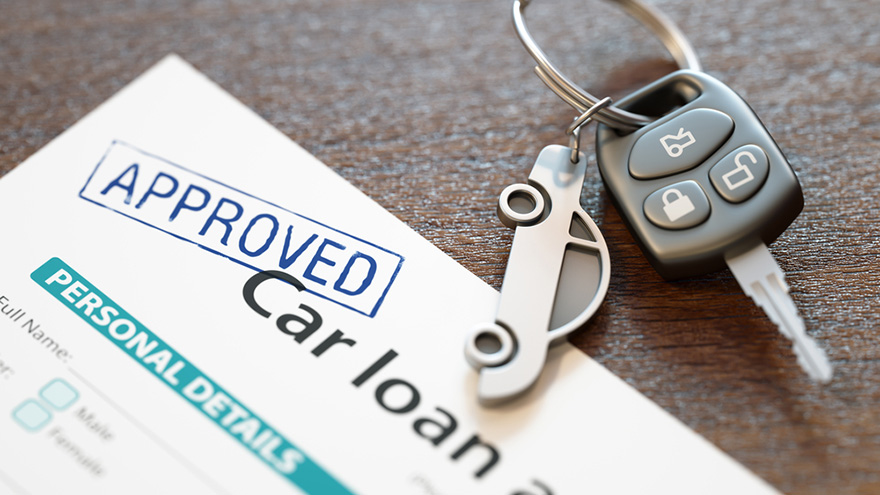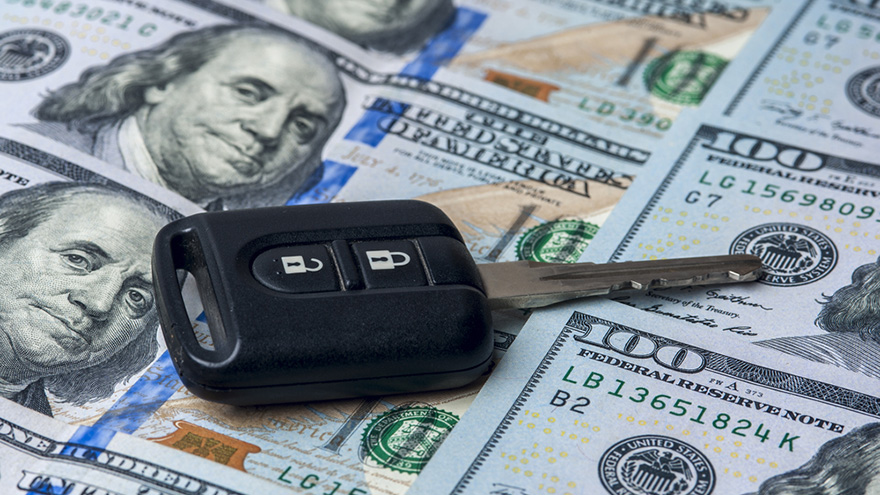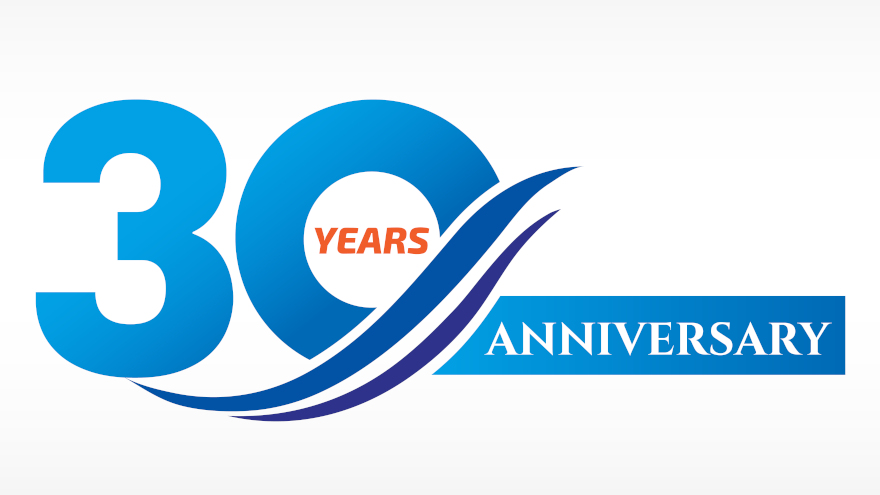With the interest rates connected to a retail installment sales contracts becoming more pronounced thanks to actions by the Federal Reserve, Carleton recently revisited a topic the compliance firm often discusses with clients.
Carleton reiterated official definitions as well as shared best practices regarding how best to achieve accuracy in Truth in Lending Act (TILA) disclosures for annual percentage rates embedded in those contracts.
To address the corresponding regulatory requirements, Carleton explained there are three key considerations, including:
—TILA’s Regulation Z states the annual percentage rate is “to be determined,” meaning calculated.
—Appendix J to Regulation Z contains 15 pages of definitions, variables and algorithms to accurately calculate an APR value.
—Yet, nowhere within Regulation Z is there any guidance that “in the absence of fees included in the finance charge, the resulting APR will be the same as the interest rate.”
To be clear, Carleton recapped the federal explanation included within Regulation Z to define the determination of annual percentage rate.
“The annual percentage rate is a measure of the cost of credit, expressed as a yearly rate,” the act states. “Creditors may use any other computation tool in determining the annual percentage rate if the rate so determined equals the rate determined in accordance with Appendix J to this part, within the degree of accuracy set forth in paragraph (a) of this section.”
Carleton acknowledged that it is a common practice of loan origination and dealer management systems to pass the contract interest rate to populate the TILA APR portion of the “Fed Box” for retail installment sales transactions. In those instances, Carleton explained there is no actual “calculation” of an APR but it is simply a reiteration of the interest rate.
“The frequent assumption is that with no fees included as part of the TILA finance charge, the interest rate will always be within the 0.125-percent tolerance allowed by Regulation Z when measured from an accurately calculated TILA APR,” Carleton experts said.
“However, to assure compliance — despite the interest rate value being within the tolerance most of the time — Carleton’s recommendation is to always compute an accurate and precise APR to absolutely ensure compliance for both regulatory and civil liability needs,” the firm continued.
Carleton went on to mention that oftentimes the two resulting rates (the APR and the interest rate) may legitimately be represented by identical values. More often than not, Carleton noted that any differences are driven by differences in the calendars used by the system(s) to compute the actual interest.
“In today’s world, ‘simple interest’ has become quite prevalent and incorporates an interest charge based on the actual calendar days existing between scheduled payments,” Carleton said.
“But the actuarial method of computing a TILA APR disregards the fact that months have varying numbers of days and treats each ‘month’ as 1/12 of a year. Thus, the two rates in comparison may actually be derived from disparate and divergent principles,” the firm continued.
Carleton emphasized that it is important to note that the 0.125-percent tolerance requirement is only a TILA “regulatory safe harbor” within a lending transaction.
“The more critical concern is often litigation and defending an ongoing ‘pattern of practice,’” the firm continued.
Should an accurately-computed APR be slightly larger than a base-computed interest rate on a regular basis, a claim of consistently under-stating the APR value on the contract to consumers may be problematic, according to Carleton.
“The chosen methodology is ultimately driven by a lender’s tolerance for risk pertaining to compliance,” Carleton said.
“Carleton’s best practice recommendation is for lenders to adopt an accurately computed TILA APR as their ‘no-risk’ solution,” the firm concluded.
For more details, go to carletoninc.com.
Dealers nationwide not only can use Westlake Financial Services to get a deal bought for their potential buyers, but stores also can leverage the provider for another ancillary product, too.
Westlake recently announced the nationwide expansion of its vehicle protection program, SECUREONE.
SECUREONE offers two vehicle protection coverages — Powertrain and Advantage.
Powertrain covers the vehicle’s engine group, transmission, transaxle, transfer case and drive axle group. Advantage Coverage includes Powertrain Coverage, plus; power steering, electrical and air conditioning.
Both coverage options are available on either a 12-month/12,000-mile or a 24-month/24,000-mile vehicle protection term.
Additional product benefits include: 24-hour roadside assistance, rental car and trip interruption as well as turbo/supercharger engines, and officials added that 4WD/AWD type vehicles are covered at no additional charge.
“We have been pleased with the feedback we have received from our customers,” said Ralph Ontiveros, vice president of Westlake Services & Lending Solutions. “SECUREONE’s success stems from reliable vehicle protection options with a customer-first philosophy.”
Westlake Financial Services is active in all 50 states plus Puerto Rico, with a dealer base of more than 30,000 franchised and independent dealerships.
Dealerships interested in learning more about Westlake Financial Services are invited to contact Westlake directly at (888) 893-7937 or online at www.westlakefinancial.com.
Dealerships that offer Wise F&I products now can direct their vehicle buyers to YouTube to help boost possible sales in the finance office.
Wise F&I recently launched a YouTube channel featuring product videos about voluntary protection products. Wise F&I explained that these videos are educational and provide product information in a manner geared to be easily understood.
“We are always looking for ways to further support our automotive dealer partners. We feel by providing videos as a marketing resource, the dealerships have the ability to educate the consumer on the benefits of the voluntary finance and insurance products they are offering,” Wise F&I president Matt Croak said.
The Wise F&I channel available here features a video for each of its products — GAPWise, WiseCARE, WiseTVP, WiseMVP, VALUEWise, TIREWise, THEFTWise and KEYWise.
When reacting to this week’s trade announcement coming from the White House, one of Edmunds experts cautioned that, “Given that new-vehicle prices are already stretched to record highs, things could take an ugly turn for consumer wallets, especially considering the trend of continuously rising interest rates.”
Well, that ugliness Edmunds referenced might have arrived just a day later.
Edmunds reported that high interest rates continued to put pressure on new-vehicle sales in September. The annual percentage rate (APR) on new financed vehicles averaged 5.8 percent in September, compared to an average APR of 4.8 percent in September of last year and 4.1 percent five years ago.
Edmunds also noted that interest rates have stayed above 5 percent for eight months in a row, mirroring APRs that the industry witnessed prior to the recession.
Analysts noticed an increase in the average down payment for new vehicles, a steep drop in zero percent finance contracts and a contraction of terms as signs of tightening credit conditions for shoppers. In September:
● The average down payment for a new vehicle soared to $4,198, compared to $3,817 in September 2017 and $3,555 five years ago.
● The availability of zero percent finance loans dropped to 5.6 percent compared to 10.1 percent in September 2017, hitting the lowest September level since 2005.
● Average loan terms contracted to their lowest levels all year, dropping to 68.7 months in September, compared to 69.4 months in September 2017 and 65.5 months five years ago.
“The trickle-down effect of elevated interest rates really started hitting car shoppers in September,” said Jeremy Acevedo, Edmunds’ manager of industry analysis.
“While new-vehicle prices continue to rise, favorable credit offerings are growing increasingly more difficult to come by,” Acevedo continued. “Buying conditions are far less amenable for consumers than they were before, which might come as a shock for shoppers coming back to the market for the first time in a few years.”
Edmunds experts reiterated that that the Fed rate hike that went into effect toward the end of September is a harbinger of worsening market conditions heading into the fourth quarter.
“The higher Fed effective rate means we can expect to see interest rates continue to inch up as we head into the rest of the year,” Acevedo said. “While strong economic factors like low unemployment rates and high consumer confidence have helped sustain healthy sales levels so far amid less favorable conditions, cheap and easy credit is really what shoppers zero in on when purchasing a new vehicle.
“As credit offerings grow more rigid for consumers, automakers are facing increased pressure on new vehicle sales through the end of the year,” he added.
New-Car Finance Data
|
|
September 2018
|
September 2017
|
September 2013
|
|
Term
|
68.70
|
69.36
|
65.51
|
|
Monthly Payment
|
$537
|
$511
|
$467
|
|
Amount Financed
|
$31,062
|
$30,736
|
$27,081
|
|
APR
|
5.80
|
4.83
|
4.07
|
|
Down Payment
|
$4,198
|
$3,817
|
$3,555
|
Used-Car Finance Data
|
|
September 2018
|
September 2017
|
September 2013
|
|
Term
|
66.95
|
66.81
|
64.28
|
|
Monthly Payment
|
$401
|
$386
|
$366
|
|
Amount Financed
|
$21,697
|
$21,380
|
$19,470
|
|
APR
|
8.38
|
7.52
|
7.81
|
|
Down Payment
|
$2,657
|
$2,494
|
$2,161
|
Perhaps individuals not only are in position to take on automotive debt, but they also have sureness regarding the wherewithal to maintain monthly payments on their retail installment sales contracts.
In fact, a leading indictor hasn’t been this high in nearly 20 years.
The Conference Board Consumer Confidence Index increased in September, following a large improvement in August. The index now stands at 138.4, up from 134.7 in August.
The Present Situation Index improved marginally from 172.8 to 173.1, while the Expectations Index surged from 109.3 last month to 115.3 this month.
The monthly Consumer Confidence Survey, based on a probability-design random sample, is conducted for The Conference Board by Nielsen. The cutoff date for the preliminary results was Sept. 14.
“After a considerable improvement in August, Consumer Confidence increased further in September and hovers at an 18-year high,” said Lynn Franco, director of economic indicators at The Conference Board. “The September reading is not far from the all-time high of 144.7 reached in 2000.
“Consumers’ assessment of current conditions remains extremely favorable, bolstered by a strong economy and robust job growth. The Expectations Index surged in September, suggesting solid economic growth exceeding 3.0 percent for the remainder of the year,” Franco continued.
“These historically high confidence levels should continue to support healthy consumer spending, and should be welcome news for retailers as they begin gearing up for the holiday season,” Franco went on to say.
Experts indicated consumers’ assessment of current conditions held steady in September. Those stating business conditions are “good” increased from 40.5 percent to 41.4 percent, while those saying business conditions are “bad” declined marginally from 9.3 percent to 9.1 percent.
Consumers’ assessment of the labor market was somewhat more favorable. Experts found that those claiming jobs are “plentiful” increased from 42.3 percent to 45.7 percent, but those claiming jobs are “hard to get” increased from 12.1 percent to 13.2 percent.
The latest index update also showed consumers’ optimism about the short-term outlook improved considerably in September.
The percentage of consumers anticipating business conditions will improve over the next six months increased from 24.4 percent to 27.6 percent, while those expecting business conditions will worsen declined, from 9.9 percent to 8.0 percent. Consumers’ outlook for the labor market was also more upbeat.
Experts added the proportion expecting more jobs in the months ahead increased from 21.5 percent to 22.5 percent, while those anticipating fewer jobs decreased from 13.2 percent to 11.0 percent.
Regarding their short-term income prospects, experts mentioned the percentage of consumers expecting an improvement declined from 25.4 percent to 22.6 percent, but the proportion expecting a decrease declined marginally, from 6.9 percent to 6.5 percent.
The auto-finance industry passed another milestone as Equifax determined current portfolios collectively now exceed $1.25 trillion.
However, subprime paper isn’t pushing the industry-wide figure higher as much as volume within that segment did a year ago.
To get to the $1.27 trillion overall figure reported as of May, Equifax indicated dealerships and finance companies generated 10.2 million contracts, totaling $230.6 billion, through the first five months of this year. Those figures represented increases of 1.1 percent and 3.2 percent, respectively.
Equifax pointed out that retail installment contracts constituted 85.9 percent of all originations and 89.4 percent of all new balances booked through May. More details on vehicle leasing in a moment.
Analysts drilled deeper and found that 2.33 million contracts were originated through May to consumers with a VantageScore 3.0 credit score below 620, generally considered subprime accounts. That volume marked a 2.5-percent decline year-over-year.
That newly originated subprime paper had a corresponding total balance of $41.7 billion; a 1.8 percent decrease year-over-year, according to Equifax.
Through May, Equifax determined that 22.8 percent of retail installment contracts were issued to consumers with a subprime credit score, and they accounted for 18.1 percent of origination balances. By that juncture a year ago, analysts pegged the subprime account share at 23.7 percent and balance share at 19.0 percent.
Equifax also mentioned the average amount finance for all contracts originated in May came in at $22,946, a 2.5-percent lift year-over-year. The average amount financed in a subprime deal ticked up just 0.82 percent year-over-year, settling at $18,306.
“As further evidence of the strong automotive market that has been present ever since the end of the recession, total outstanding auto portfolio balances have now eclipsed the one-and one-quarter mark, reaching 1.27 trillion,” said Gunnar Blix, deputy chief economist for Equifax.
“While total originations are down slightly from the previous two years, clearly the solid economy continues to make shoppers comfortable in absorbing not only higher prices of vehicles, but also in larger balances on their loans,” Blix continued.
Latest insights on leasing
While not as prevalent as activity in the prime space, Equifax gave a rundown of subprime vehicle leasing through the first five months of the year. Like origination of retail installment contracts, analysts found that subprime leasing softened year-over-year, too.
During the first five months of the year, Equifax said 154,800 vehicle leases were originated to consumers with a VantageScore 3.0 credit score below 620. The volume represented a 3.6-percent decrease year-over-year.
Analysts added these newly issued leases have a corresponding total balance of $2.67 billion, a 3.9 percent decrease year-over-year.
Through May, Equifax pointed out that 9.3 of auto leases were issued to consumers with a subprime credit score. A year earlier, the share stood at 9.6 percent.
Looking at the overall leasing segment, Equifax reported that more than 1.67 million vehicle leases, totaling $27.2 billion, were originated through May. While the volume figure remained steady, analysts spotted a 1.9 percent dip in balances, year-over year.
Equifax indicated vehicle leases accounted for 14.1 percent of all auto accounts originated through May and 10.6 percent of balances.
Analysts closed by noting the average origination balance for all auto leases issued in May came in at $16,325, a 0.89-percent decrease from May of last year.
The average subprime lease amount was $17,300, a 0.28-percent increase over a year ago.
Equifax explained that lease origination values reflect the contract amounts only and exclude expected vehicle residual values.
Back in 1988, a gallon of gas cost less than a dollar, and birds did all of the tweeting.
Now with fuel much more expensive and tweeting having an entirely different connotation, Westlake Financial Services is celebrating, having reached 30 years in business this week and growing to one of the largest, privately owned auto finance companies in the country.
“Westlake’s longevity is a testament to our products and our people,” Westlake Financial Services president Ian Anderson said. “Our employees are encouraged daily to be forward thinkers, use technology to improve efficiency and identify new products and services we can offer our dealer partners.”
To commemorate the occasion, Westlake hosted an employee appreciation event to celebrate three decades in the auto industry and honor its employees’ hard work and dedication. This event consisted of games, raffles, food, and of course, birthday cake.
“Thirty years in business is an amazing milestone,” added Don Hankey, chairman of the board for Westlake Financial Services. “I would like to thank Westlake’s employees for continuing to believe in the Westlake brand and products.”
In 1988, Hankey founded Westlake Financial Services based on a need for subprime lending for his customers through his dealership. What started out as a footprint solely in subprime auto financing, Westlake Financial Services has blossomed into an operation with $7.73 billion in assets.
Today, Westlake offers dealerships a full spectrum of finance solutions, including indirect lending through Westlake and Western Funding, floor plan financing through Westlake Flooring Services, portfolio acquisitions and servicing through ALPS and Westlake Portfolio Management, auto leasing trough CULA, and direct-to-consumer secured loans through Wilshire Consumer Credit.
Individuals and dealerships interested in learning more about Westlake Financial Services can contact the company at (888) 893-7937 or online at www.westlakefinancial.com.
As summertime unofficially winds down, Spireon is celebrating a number of corporate milestones secured during the first half of the year.
Spireon attributed product innovation, “white-glove” customer service and key industry partnerships to increases in revenue, active subscriptions and customer service metrics.
“Results for the first half of 2018 show market demand remains extremely strong for our best-in-class connected vehicle solutions,” Spireon chief executive officer Kevin Weiss said. “Across the core markets we serve — auto dealerships, transportation companies and local fleets — a growing number of customers and partners are selecting Spireon based on the quality of our products and outstanding customer service.
“We have made significant investments to scale the business and those investments are paying off,” Weiss continued.
In the franchised dealer segment, Spireon increased Kahu device shipments by 65 percent and boosted revenues by 38 percent during the first six months of the year, compared to the same period in 2017.
The company highlighted Kahu continues to attract large dealer groups for its ability to improve sales effectiveness, operational efficiency, risk management and customer service scores. In Q1, the company showcased unique capabilities of Kahu, such as advanced analytics for test drives and aging inventory, car-sharing with Drive On Demand and consumer mobile app features designed to grow service retention and add-on revenue.
The significant, rapid business impact of Kahu to dealerships has gained 73 new dealer customers for Spireon in the first half of 2018.
Kahu generates meaningful profit for dealers while delivering compelling consumer benefits including stolen vehicle recovery and connected car features. During the first half of the year, consumers used the Kahu app on average 11 times per month to locate their vehicle as well as set geofence and speed alerts.
Spireon mentioned the Kahu app has maintained ratings of 4.6 out of 5, or higher, on both Apple and Google app stores, illustrating the high value of Kahu to car buyers.
The company continues to innovate and grow market share in the subprime sector as well, with device shipments to buy-here, pay-here dealers growing 4 percent year-over-year.
In June, Spireon released Quick Locate, a new feature for its GoldStar solution that can provide dealers and finance companies with instant visibility to vehicle location and status.
Spireon insisted GoldStar customers remain extremely loyal, with an average customer rating of 8.9 out of 10, and 94 percent likely to recommend GoldStar, according to a TechValidate survey of BHPH dealers published in March.
A leader in the trailer management space, Spireon achieved a significant milestone surpassing 200,000 trailer telematics subscribers for its FleetLocate asset and trailer intelligence solution.
The rapid growth of Spireon’s market share in the trailer segment is due in part to continued innovations that streamline operations and increase profitability for customers. In the first half of 2018, the company introduced FL Flex, the industry’s first modular trailer tracker designed for mixed fleets. The compact, power-efficient tracker can be configured with a wide range of sensors, such as the new FleetLocate Cargo Sensor with patent-pending IntelliScan sensing technology, announced in early July.
In the first half of this year, trailer revenues increased 36 percent versus the same span a year earlier, and Spireon secured or grew business with several notable enterprise customers including Transervices, Contract Leasing Corp. and Ryder System.
Spireon’s fleet business in the small and mid-market segments also grew in with a 45-percent increase in device shipments year-over-year.
Partnerships with leading brands and resellers extended the reach of Spireon fleet solutions, and included:
• General Motors: Spireon launched their FleetLocate Connected by OnStar solution in mid-2017, enabling customers with OnStar-equipped GM vehicles to gain instant access to the FleetLocate platform without added costs or installation time associated with aftermarket devices. In the first half of this year, the company achieved 27 percent growth in activations versus the second half of 2017.
• Ford Commercial Solutions: In June, Spireon partnered with Ford Commercial Solutions for FleetLocate to access data through Ford’s Transportation Mobility Cloud. As a result, fleet operators with Ford vehicles will be able to utilize FleetLocate with no aftermarket hardware required.
• FleetLocate Resellers: In the first half of this year, Spireon experienced 53 percent growth in fleet channel revenue from its largest reseller partner, and a 73-percent increase in active subscriptions year-over-year. Overall, device shipments through the company’s reseller channel have increased by 39 percent.
Furthermore, Spireon in August was among six companies to join Automotive Grade Linux (AGL), a collaborative cross-industry effort developing an open platform for the connected car. With the addition of these companies and organizations, the project is 130 members strong.
Automotive Grade Linux is a collaborative open source project that aims to accelerate the development and adoption of a fully open software stack for the connected car. Leveraging the power and strength of Linux at its core, AGL is uniting automakers and technology companies to develop an open platform that offers OEMs complete control of the user experience so the industry can rapidly innovate where it counts.
“Spireon has nearly 4 million vehicles connected to our NSpire platform, and data from more than 326 billion driving miles under our belt, so we fully understand the challenges of a fragmented telematics ecosystem that the AGL project seeks to overcome,” Spireon chief technology officer Rick Gruenhagen said.
“A standardized software stack will accelerate autonomous and other connected vehicle benefits by helping solution providers like Spireon gain secure access to in-vehicle functions and data that have been locked in OEM-specific implementations until now,” Gruenhagen continued.
And among other developments, Spireon improved its Net Promoter Score (NPS), a key measure of customer satisfaction and loyalty, to 71, far surpassing the industry average of 21.4 for business-to-business technology companies. Reinforcing the company’s commitment to outstanding service and support, Rashid Ismail joined the company in March as senior vice president of customer success.
Ongoing third-party recognition continued to underscore the excellence of Spireon’s service, support and technology. Awards won in the first half of 2018 include:
• Stevie Awards for Sales & Customer Service: Silver Award for Customer Service Department of the Year in the 2018
• Compass Intelligence Awards: IoT Vehicle Telematics Company of the Year in 2018
• American Business Awards: Silver Award for Spireon’s NSpire version 3.0 IoT platform in the New Product of the Year category
“The Spireon team continues to raise the bar on achieving key business metrics — whether that is devices shipped, revenue, new customers or NPS scores — which is not an easy feat when looking at the company’s substantial transformation in recent years,” Weiss said.
“Our unrivaled commitment to customer service, aggressive technology roadmaps and thriving partnerships have set us up for a strong finish to 2018,” he went on to say.
The amount of outstanding deep subprime paper slid to an all time low during the second quarter, according to Experian’s State of the Automotive Finance Market report released on Thursday.
Analysts discovered deep subprime softened to an all-time low of 3.54 percent of the $1.149 trillion that Experian tabulated to be the total amount of outstanding auto-finance balances as of the close of Q2. A year ago, 3.98 percent of all outstanding balances fell into the deep subprime category.
To reiterate, Experian classifies deep subprime paper to be attached to consumers with credit scores between 300 and 500.
Overall, Experian determined that outstanding subprime and deep subprime auto financing — individuals with credit scores below 600 — declined to less than 19 percent of the market. As a result, the report showed average credit scores for new- and used-vehicle financing continue to improve, reaching 715 and 655, respectively.
“Having access to quality credit is something every consumer deserves, regardless of the type of financing used. As the cost of vehicles rises, lenders need to make sure they’re leveraging all available data so they can offer comprehensive financing options to all consumers,” said Melinda Zabritski, Experian’s senior director of automotive financial solutions.
“Consumers can also take steps to make sure they’re financially ready when looking to buy a car. We’re seeing the positive trend of on-time payments, which is just one step toward improving credit scores.”
Meanwhile, as contract amounts and monthly payments continue to reach new highs, Experian thinks that consumers seem unfazed since the percentage of 30- and 60-day delinquencies improved during Q2.
Report findings showed 30-day delinquencies dropped to 2.11 percent from 2.2 percent a year ago, while 60-day delinquencies dropped to 0.64 percent from 0.67 percent over the same time period.
“As we monitor the health of the automotive market, delinquencies are one of the most telling metrics. If this downward trend continues, it can be an encouraging sign,” Zabritski said.
“Moving forward, lenders will want to keep a close eye on car buyers’ payment performance. Understanding these trends and leveraging the power of data helps lenders make the right decisions when analyzing risk,” she continued.
But while delinquencies trend downward, affordability remains a point of industry interest, as the average amount financed continues to rise across the spectrum.
The average new-vehicle installment contract amount jumped more than $700 year-over-year to $30,958 in Q2, while used-vehicle installment contract figures increased $520 to reach $19,708.
Moreover, Experian pointed out that new- and used-vehicle monthly payments hit record highs during the quarter, with the average new monthly payment increasing $20 year-over-year to $525, and the average used monthly payment increasing $13 over the same time period, reaching $378.
Taking an even closer look at the data, Experian explained that finance companies can gain insights from the gap between new and used financing payments, which continues to widen, reaching $147 in the second quarter.
“For some consumers, that gap can mean the difference between buying a new or used vehicle,” Experian said.
The report also showed that consumers are increasingly looking to credit unions to secure automotive financing.
Credit unions saw double-digit growth for new-vehicle financing (12.9 percent) and strong growth overall (4.9 percent), closing in on 21.3 percent of the market at the end of Q2.
The only other provider type to experience growth was captive finance companies, which grew 1.2 percent during the same time period.
Experian mentioned five other additional findings from its latest report, including:
— Outstanding loan balances hit a record high but experienced slowing growth, reaching $1.149 trillion in Q2 2018, up from $1.027 trillion in Q2 2016.
— Leases decreased slightly year-over-year, from 30.83 percent in Q2 2017 to 30.41 percent in Q2 2018.
— 72 months remains the most common loan term for both new and used installment contracts.
— Market share for banks dropped to 31.6 percent in Q2 2018 from 32.3 percent in Q2 2017.
— Interest rates increased across all contract types, with the exception of used-vehicle deals in the deep-subprime segment.
Two service providers perhaps already being leveraged at your store now are working together to help you turn more financed deliveries.
This week, Auto/Mate Dealership Systems integrated its dealership management system (DMS) with ProMax, a leading supplier of retail automotive CRM/ILM, desking, credit and compliance software.
The companies highlighted that dealers using both Auto/Mate and ProMax solutions can benefit from the enhanced sales, lead, marketing and productivity management tools available through real-time data exchanges between the two systems.
“ProMax is a proven, award-winning company that designs software to give dealerships a competitive edge in a demanding market,” said Mike Esposito, president and chief executive officer of Auto/Mate Dealership Systems.
“Additionally, ProMax provides a variety of services to help dealers generate, follow up and market to leads, as well as tools and training to close customers for a complete front-end solution,” Esposito continued.
Auto/Mate’s integration program, Open/Mate, is based on open standards, allowing third-party vendors to easily integrate with the DMS. The company said some DMS providers charge third parties expensive certification fees, the cost of which is usually passed onto their auto dealer customers.
Auto/Mate emphasized that its open integration program keeps integration costs low for vendors, saving dealers money while providing them with more vendor choices.
ProMax’s advanced lead tracking and CRM management tools can enable dealers to identify the best-performing lead sources, create targeted marketing campaigns and drive more customer traffic to the showroom. ProMax software solutions can streamline the vehicle-buying process for customers and improve sales team performance, leading to more deals.
“Auto/Mate customers that are used to a high level of customer service and support can expect the same stellar experience and ease of use with all of our ProMax solutions,” said Darian Miller, chief technology officer of ProMax.
“Additionally, we appreciate Auto/Mate’s low-cost integration process so that we don’t have to pass high integration and certification costs to our dealer customers,” Miller went on to say.












